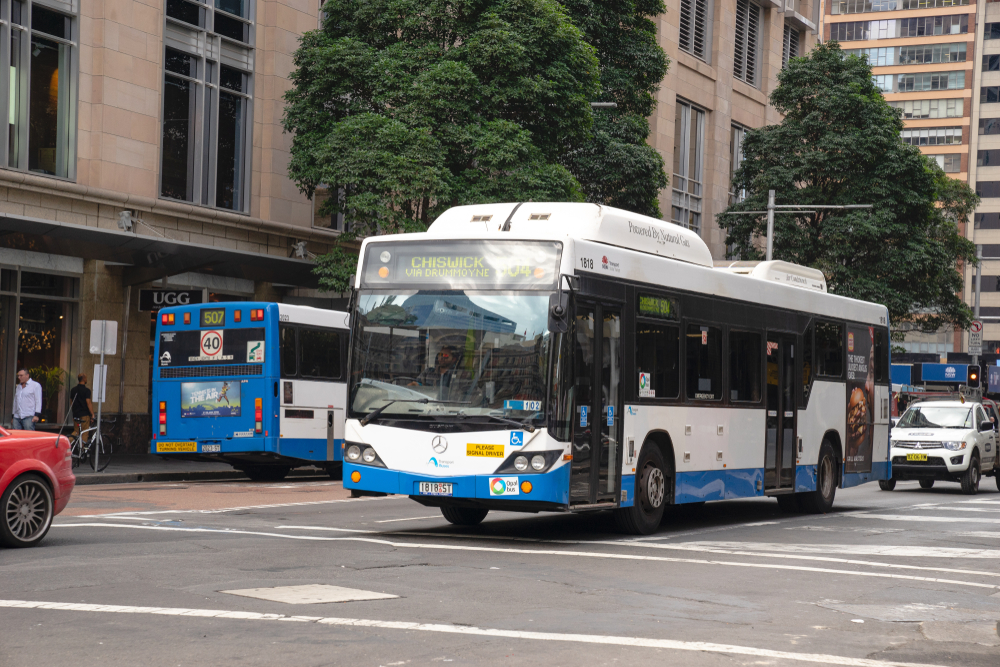Share This Article
Array
It is reported that a 49-year-old bus driver who was travelling on Kingsgrove Road, Kingsgrove on Monday night collided into a scooter carrying 2 passengers on it. The scooter was reportedly stationary at the time of collision.
It is alleged that the impact of the collision had caused the scooter to be pushed onto the path of oncoming traffic.
Police will allege that the bus driver was using his mobile phone at the time.
Unfortunately, the two scooter passengers aged 32 and 44 died on the road.
While the bus sustained some damage to its front driver side window, the scooter sustained significantly damages.
The driver of the vehicle that the scooter was pushed in-front of and the bus driver both sustained no injuries from the collision but were taken to hospital for routine checks.
It is reported that the bus did not carry any passengers at the time.
The buss driver was refused bail after being charged with 2 counts of dangerous driving occasioning death, negligent driving occasioning death, another count of using mobile phone while driving and not wearing seat belt.
The bus driver is required to appear at the Sutherland Local Court.
Dangerous Driving Laws in NSW
A person who is guilty of dangerous driving occasioning death will face a penalty of up to 10-years imprisonment under section 52A(1) Crimes Act 1900 (NSW).
A person can only be guilty of dangerous driving occasioning death if the prosecution establishes beyond reasonable doubt that:
- The vehicle you were driving was involved in an impact with another person; and
- The impact resulted in the other persons death; and
- When you were driving, you were either driving in a speed or manner dangerous to other people, or you were intoxicated from alcohol or drugs.
You will be found not guilty if any one of the following defences apply:
- The prosecution is unable to prove any one of the above 3 elements of the offence of dangerous driving occasioning death.
- You were driving under duress or necessity from threats.
- Mental illness defence.
What Does Driving in a Manner Dangerous Mean?
Driving in a manner dangerous was outlined in the case of R v Buttswroth [1983] where you drive in a speed or manner that’s considered dangerous, real or potential to the public. The circumstances of the driving will be relevant to determining whether such a danger exists. Factors the court will consider include, the speed you were traveling, whether you observed the traffic signals, conditions of the road and vehicle that was driven, and the immediate consequences of the driving.
Aggravated Dangerous Driving Occasioning Death
There is a maximum penalty of up to 14-years imprisonment to anyone guilty of aggravated dangerous driving occasioning death under section 52A(2) Crimes Act 1900 (NSW).
This offence will be established only if the elements that make up dangerous driving occasioning death is satisfied noted above, in addition to proving that it occurred ‘in circumstances of aggravation’.
What Does ‘Circumstances of Aggravation’ Mean?
Circumstances of aggravation is defined in section 52A(7) Crimes Act 1900 (NSW), and includes:
- Where the driver had in his/her breath or blood the prescribed concentration of alcohol (Drink driving).
- The driver of the vehicle was travelling at least more than 45km/h over the speed limit.
- The driver was escaping while being pursued by police
- The driver’s ability to drive was very substantially impaired from being under the influence of drugs or alcohol.
Book a Lawyer Online
Make a booking to arrange a free consult today.
Call For Free Consultation
Call Now to Speak To a Criminal Defence Lawyer
Over 40 Years Combined Experience
Proven SuccessAustralia-Wide
Experienced LawyerGuarantee
 (02) 8606 2218
(02) 8606 2218
 (02) 8606 2218
(02) 8606 2218















